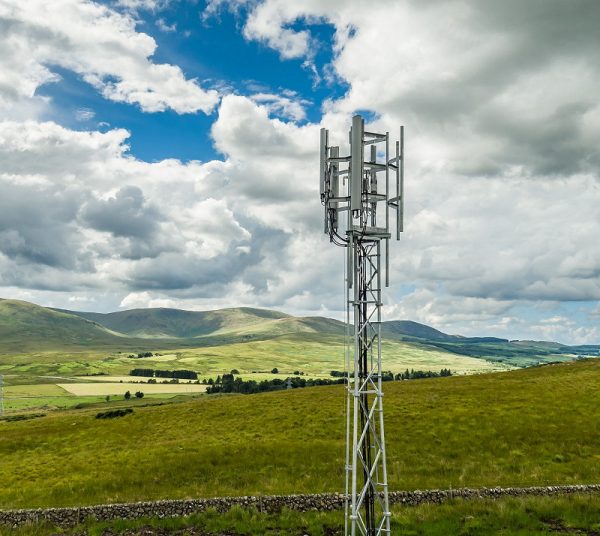RootMetrics CEO Backs Plan to Allow 30 Metre UK Mobile Masts

The CEO of mobile benchmarking firm RootMetrics, Kevin Hasley, has given his support to the Government’s proposed rule changes (here), which among other things will allow mobile operators to build taller 30 metre masts in order to boost rural 4G and 5G coverage. But he warns that such towers will need more data capacity.
At present 25 metres (height) is currently the legal limit in England for mobile masts / towers (it’s even lower in some parts of the UK, such as Wales), but outside urban areas operators would also like to build taller masts because this is one way to significantly boost coverage, while keeping costs down. Some EU countries already allow masts of up to 50 metres.
In addition, taller masts put the radio equipment even further away from people on the ground (safer). Likewise, having taller masts means that you need fewer small masts, which is another bonus and may soften the cosmetic impact in some areas. But it’s currently unclear how many smaller masts may actually be removed with a boost to 30m.
Advertisement
According to Ofcom (here), increasing a mast’s height from 15m to 20m can boost the coverage it provides by 10%, while going from 20m to 25m can increase that by a further 19%. However, Kevin Hasley found from RootMetrics own data that changing the height of a mast from 20 to 25 metres can extend mobile coverage by about 11%, while going from 25 to 30 metres could further extend coverage by another 8-9%.
Kevin Hasley, RootMetrics CEO, told ISPreview.co.uk:
“The key driver behind increasing the height of cellular masts is to extend mobile coverage so that more users can enjoy the growing volume of 5G and 4G LTE services over wider geographical areas. In addition, increasing the height of masts also allows operators to boost data speeds.
Whether it’s new construction on the green belt or building a wall in front of your neighbour’s house, any new structures can raise concerns. However, extending telephone masts can bring about significant benefits. For example, changing the height of mast from 20 metres to 25 metres can extend mobile coverage by about 11%. Likewise, increasing masts from 25 metres to 30 metres could further extend coverage by another 8-9%.
With the UK attempting to offer high-speed connectivity across the entire country, bringing connectivity to rural areas is critical; users in those areas need access to the fast and reliable connectivity that people and businesses in major cities currently enjoy and often need, particularly because of the pandemic. Expanding masts has the potential to provide better and broader coverage to both urban and rural areas, both for 4G LTE and 5G service. Moreover, taller masts can also help mobile operators increase the speed of 5G deployments and expansion efforts — and when 5G expands, so too does the growth of our connected communities.
It’s important to keep in mind, however, that each mast offers a specific and finite amount of network capacity, and if that capacity is spread over a larger area, it’s possible that we could see slower speeds and/or interference in some areas, at least in the short term. For instance, as coverage expands with larger masts, those masts could interfere with others, and overcoming that inference will require extensive optimisation efforts, with techniques such as beamforming, MU-MIMO and others that mobile operators can use to minimise any negative effects from interference.
While trade-offs for extending towers do exist, the benefits of increasing the height of towers should outweigh any potential downside, providing users with broader coverage and faster speeds, ultimately extending today’s connected communities beyond just major cities and intro rural areas where coverage is often poor or even non-existent.”
The Government are currently consulting on these changes until 14th June 2021, and we should learn the outcome later this year.
Mark is a professional technology writer, IT consultant and computer engineer from Dorset (England), he also founded ISPreview in 1999 and enjoys analysing the latest telecoms and broadband developments. Find me on X (Twitter), Mastodon, Facebook, BlueSky, Threads.net and Linkedin.
« Vodafone UK Considers Investing in BT’s GBP15bn Fibre Rollout
Business UK ISP Wavenet Acquired by Macquarie Capital »























































That’s interesting because there are some masts in the UK taller than 25 meters that have been in location for decades.
There are some Microwave ones that may be taller, but they’re for a specific network and not consumer mobile. They also date back to before current rules and a few others might fall into that too.
The solution is surely around planning. If a network wants to build a mast it should be able to, especially on Network Rail and MOD land.
oh then we’re all sorted then, i mean if Kevin Hasley is good then it has to be done right?
About time….
Pretty sure the TV relay on M4 near the services those mobile antenna arrays are 25 metre and more. Still can’t see having any effect in the usual problem planning areas of UK